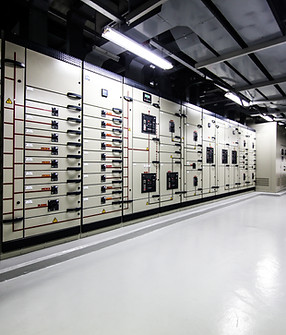Structured Cabling Solutions for Data Centres
Location
Service Type
Our Comprehensive Services
Tech Network Cabling, a leader in providing structured cabling solutions specifically designed for data centers.
With over ten years of extensive in the industry, we have honed our skills to deliver exceptional service and support.
Our dedicated team specialises in both the design and installation of robust cabling systems, ensuring that every aspect is tailored to meet your specific operational needs.
We understand that each business is unique, which is why we offer 24-hour support to cater to organisations of all sizes, from small enterprises seeking efficient solutions to large corporations requiring complex infrastructure.
Our commitment to delivering reliable and scalable cabling solutions ensures that your data center operates at peak performance. Trust Tech Network Cabling to enhance your network's capabilities and drive your business toward success.

Understanding Cabling Options
Before we explore the advantages of fiber optics, let's clarify the differences between copper cabling and fiber optic cabling.
Copper cabling, such as Cat 5 and Cat 6, has long been the standard in networking. It's affordable and straightforward to install. However, its capabilities fall short as organizations demand more bandwidth, face longer distances, and deal with more interference.
In contrast, fiber optic cabling transmits data as pulses of light through glass or plastic fibers. This method allows for dramatically higher bandwidth and speed over much longer distances without degrading signal quality. This key difference positions fiber optics to better meet modern data application demands, making it a smart choice for future-proofing your data center.
The Advantages of Fiber Optic Cabling
Fiber optic cables offer several benefits in a data center environment.
They provide higher bandwidth and faster data transmission speeds compared to copper cables, allowing for efficient handling of large amounts of data. Additionally, fiber cables are less susceptible to electromagnetic interference, which enhances signal quality and reliability.
Their lightweight compact design also allows for easier installation and management within the data center infrastructure.
Services
Upgrading to fiber optics offers numerous benefits, including faster internet speeds and improved reliability. However, it's important to weigh these advantages against the associated costs.
Ensuring that the investment aligns with your needs and budget is crucial for making a well-informed decision. Take the time to evaluate both the short-term and long-term implications of this.

Initial Investment
The upfront cost of fiber optic cabling and installation is typically higher than that of copper wiring.
However, many organisations find this investment worthwhile, particularly when considering the long-term benefits.

Long-Term Savings
Downtime due to equipment failure can lead to substantial losses, sometimes reaching thousands of dollars per hour.
Fiber optic systems are generally more reliable and require less maintenance than copper setups, leading to more savings over time.

Scalability
As your organisation grows, your data needs will too. Fiber optics allow for easier scalability.
Often, increasing bandwidth can be managed by upgrading equipment rather than replacing cabling, translating into reduced renovation costs and downtime.







